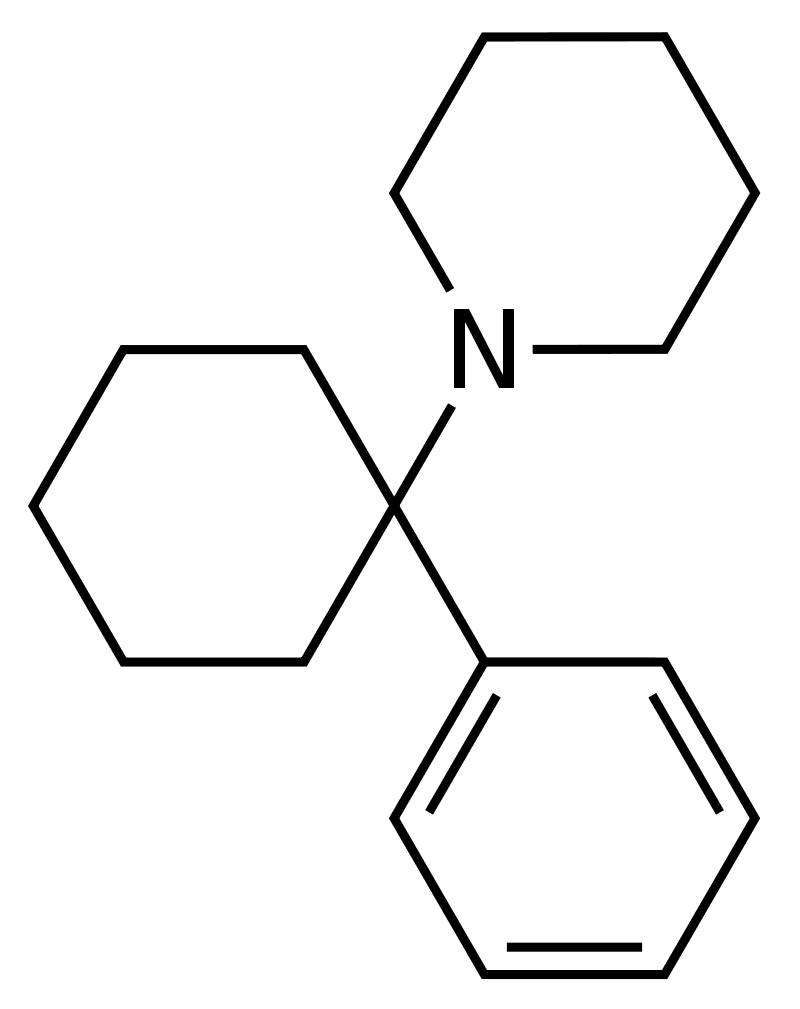Arylcyclohexylamine which is also known as arylcyclohexanamines or arylcyclohexamines are a group of pharmaceutical designer compounds used for experimental purposes. They are a group of compounds with a phenyl ring linked to the same atom the amine group is linked. They are all known to exhibit dissociative effects due to their antagonism of N-methyl-d-aspartate (NMDA) receptors. Many Arylcyclohexylamines have been researched as traditional anesthetic agents and tend to be used the wrong way, recreationally, and in search of the similar effects of the drug (1).
What are the functions of Arylcyclohexylamine drug?

It is a non-selective serotonin reuptake inhibitor, which means it takes the serotonin back from the reabsorption cycle so that it can be effectively transported to its destination. It acts as a weak nitrate and helps to convert nitrates to nitrites, N-methyl-d-aspartic acid, and N-nitro-d-glutamate amino acid. It also helps to convert lactic acid to pyruvate and in some studies has also been found to help the body to regenerate cells.
It has many uses and actions. It was originally used to treat depression, Parkinson’s disease, bipolar disorder, and sexual disorders. However, it was not until the late 70s that medical researchers discovered the multiple benefits that this drug had in treating alcoholism. It was then named an MAO inhibitor (Monoamine oxidase inhibitor) because it was found to bind with the blood monocyte receptor sites and prevent the transport of serotonin into the cell’s nuclei. In fact, studies showed that the use of this drug is very effective in treating alcoholism and its other serious medical conditions such as arteriosclerosis, dementia, sleep apnea, and narcolepsy.
Medical Use of Arylcyclohexylamine
As of this writing, the medical use of Arylcyclohexylamine is still being explored (2). Some of its benefits include the reduction or elimination of seizures, amnesia (loss of memory), mood enhancement, sedation (induced sleep), cataracts, and nausea. It has been shown to relieve the signs of depression and anxiety, improve mental functioning, and promote neuroplasticity, the ability of the brain to adapt and change. It has also been proven effective in the treatment of alcohol withdrawal symptoms.
Because of its dissimilarity from cyclobenzaprine (marketed under the names of Meclonidine, Nux Vomica, Clonidine, and Phencyclidine) and the other two non-benzodiazepines, there has been little clinical testing and no serious side effects reported. The most recent studies on the medical use of Arylcyclohexylamine showed that it has a mild sedative effect, improves short-term memory, and improves reaction time. However, there is currently no clear evidence on whether it is effective in treating depression or anxiety disorders. There are two methods for administration of Arylcyclohexamine, intravenous and oral. While the administration of oral products is usually associated with fewer side effects and quicker results, it should be remembered that the drug should not be administered with alcohol or with the combined use of other drugs.
Allergic reactions to the amino acid tyramine were recently described in detail by van der Heijst, et al. The investigators found that a single dose of Arylcycloheterine causes a rapid onset of subjective nervous system irritation, with symptoms similar to those of tyramine -2-aminobutyric acid. This may account for the reported drop in the sale of this drug by the medical fraternity in recent years.
Arylcyclohexylamine is now part of the FDA-approved category of prescription medicines called anticholinergics. Its medical use is therefore limited to the chronic treatment of muscle spasms and cramps in patients diagnosed with cyclic leg syndrome, or CFIDS, and it is also prescribed to reduce excessive sweating in patients with excessive endocrine disorder type 2. The medical use of this drug should be carefully monitored and used under close medical supervision, especially in patients who are in a very delicate condition, such as those with a history of allergies to pollen, cats, or other allergens. In accordance with United States legislation, it is prohibited to sell this particular recreational drug to persons under the age of 18. If you’re interested in trying this drug out, visit your local medical practitioner, who may be able to recommend an alternative therapy for you instead.
Other Compounds Containing Arylcyclohexylamine
There are three distinct types of compounds containing Arylcyclohexylamine that are used in treatments for Parkinson’s disease; these are PCP (3), N-Acetyl Cysteine, and N-Acetyl Cysteine (NAGAC). These compounds can also be found in some common herbal remedies, which can exacerbate certain symptoms of PD. If you are currently taking any medications that contain these ingredients such as tranquilizers, antidepressants, and antihistamines then you should avoid the combination of those drugs with Arylcyclohexylamines. Commonly referred to as a “cocktail”, a PLCB/N-Acetyl Cysteine mixture can cause a dangerous reaction in some patients.

When using PLCB, or another N-Acetyl cyclooxygenase (nCOD) inhibitor, or N-Acetyl pyrethroid (NPPI), or any other N-Acetyl group member for that matter, it is important to keep in mind that combining such medications can be dangerous. There are three separate classifications of inhibitors – analogs, mutagens, and stereotypes. Analogs are similar to the actions of the medications that they contain but can have additive effects that can further compound symptoms. Mutagens are known to cause swelling, redness, itching, nausea, and diarrhea in some patients. Stereosymes can cause serious and even life-threatening effects in patients who are not taking the medications that are formulated with the enzyme in question.
While the acute physical effects of a PLCB/N-Acetyl cysteine combination may include some nausea, vomiting, and mild dizziness, prolonged or repeated use can produce changes in blood pressure, heart rate, and respiratory rate, as well as altering levels of serotonin in the brain. When considering the use of PLCB and N-Acetyl dissociatives in treating your PD, it is important that you discuss the risks of such treatment with your physician and pharmacist. Although rare, some studies have shown that combining PLCB and N-Acetyl cysteine can result in potentially fatal conditions such as ventricular tachycardia, ventricular fibrillation, arrhythmias, hypotension, and atrial fibrillation. Because these effects can be life-threatening, it is very important that you do not treat your condition with these drugs without first consulting your doctor and receiving the necessary medical clearance.
A related compound, N-Acetyl cyclosporine (NAC), was discovered by the pharmaceutical giant Ciba Vision in 2021. NAC is similar to Arylcyclohexylamine and has the effect of counteracting the physical actions of cyclosporine. When combined, NAC effectively removes cyclosporine from the body, thus lessening the harmful mental and physical actions of the drug. Unlike PLCB and N-Acetyl dissociatives, research chemical NACs are not approved by FDA for use in humans. Because of this, it is best to avoid the use of NAC unless it comes from an officially approved medical substance.
Research chemical N-Acetyl dissociatives are the most common forms of treatment for heroin addiction. While N-Acetyl dissociatives suppress physical cravings for heroin, they do not affect emotional or mental cravings. Instead, users find that it takes significantly less “taste” to experience the same intense euphoria experienced with heroin use. Since users rarely report negative psychological effects from taking N-Acetyl dissociatives, their use is quite safe.
As with other dissociative agents, the use of Arylcyclohexylamine and N-Acetyl dissociatives carry certain potential risks, including severe, potentially life-threatening side effects. If you are considering using these drugs to treat your addiction, it is imperative that you consult with both your doctor and a certified therapist to receive professional and specialized advice regarding the use of these drugs. In the meantime, keep in mind that there are many benefits to using these alternative forms of therapy, and your health and safety should be your primary concern.
- Ibogaine: Exploring the Potential and Perils of a Psychedelic Therapy
- Behavioral Therapy: All You Need To Know About Behavioral Therapy
- Substance Use Disorders: Understanding the Science, Risks, and Recovery
- Cognitive Behavioral Therapy (CBT): Unveiling the Depths of a Transformative Approach
- Mescaline: Exploring the Science, History, and Therapeutic Potentials


Recent Comments